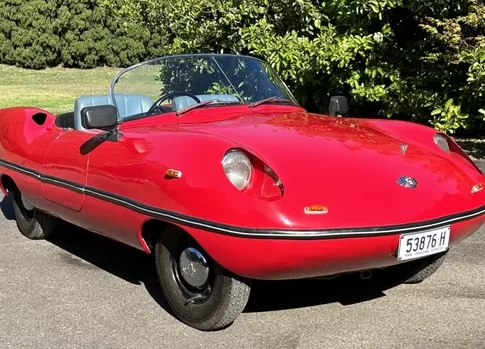The Story of the Goggomobil: A Tiny Car with a Big Legacy
In the world of classic cars, few vehicles have as much personality packed into such a small frame as the Goggomobil. This diminutive German microcar, born in the post-war era, may not have the size or speed of its larger contemporaries, but it has earned its place in automotive history. With a combination of quirky design, affordability, and a touch of whimsy, the Goggomobil has become a beloved icon for collectors and car enthusiasts alike.
A Microcar for the Masses
The Goggomobil first rolled off the production line in 1955, courtesy of Hans Glas GmbH, a German manufacturer that initially focused on agricultural machinery and scooters. Post-war Germany, like much of Europe, was facing economic challenges, and there was a growing demand for small, affordable cars that could navigate the narrow streets of the cities while consuming minimal fuel. Enter the Goggomobil.
Named after the Glas company’s owner, Hans Glas, and his family’s nickname for his son “Goggo,” the Goggomobil was designed to be lightweight, economical, and simple to maintain. The Goggomobil lineup initially featured two models: the T Sedan and the TS Coupe. Both were tiny by modern standards, measuring around 3 meters in length, but what they lacked in size, they made up for in charm.
Advertisement:
The Goggomobil T Sedan and TS Coupe
The Goggomobil T Sedan, introduced in 1955, was powered by a rear-mounted, two-cylinder, two-stroke engine. While the engine displaced a modest 250cc, 300cc, or 400cc depending on the model, the Goggomobil was lightweight, tipping the scales at just under 400 kg.
This meant that despite its small engine, it could reach top speeds of around 50 mph (80 km/h) — fast enough for the practical purposes it was designed for. The T Sedan was built with economy in mind, offering excellent fuel efficiency, which was a significant selling point during the economic recovery of post-war Europe.
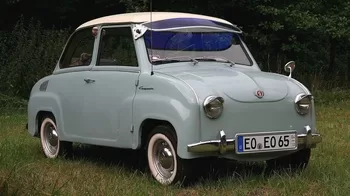
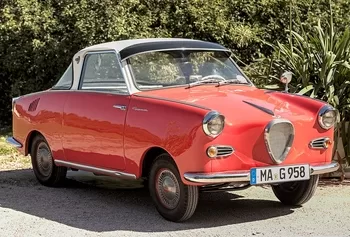

Left: Goggomobil TS Coupe. Right: Goggomobil Coupe. Photos CC BY-SA 2.0 de Wikicommons
The Goggomobil TS Coupe, which followed the sedan, added a touch of sportiness to the lineup. With its sleeker, two-door design, the TS Coupe appealed to those looking for a bit more flair while still enjoying the benefits of a microcar. Though its performance was modest, the coupe’s styling turned heads wherever it went. The TS Coupe remains one of the most sought-after models among Goggomobil enthusiasts today.
Exporting the Goggomobil to Australia
Perhaps the most famous chapter in the Goggomobil’s story is its introduction to Australia. In the late 1950s, Sydney-based car importer Bill Buckle made a bold move to bring the Goggomobil to Australian shores. He saw the potential for a small, economical car to suit the needs of Australians who wanted affordable transportation.
But rather than importing them fully assembled, Buckle secured a deal to manufacture the cars locally under license. This decision allowed him to avoid high import taxes and give the car a more competitive price in the Australian market.
The Australian-made Goggomobils featured fiberglass bodies instead of the steel used in the German models, an adaptation that reduced weight and simplified the manufacturing process. The locally produced Goggomobil became a familiar sight on Australian roads, especially in the 1960s. The car’s affordable price and reliability made it popular among young drivers and families alike.
One of the most famous uses of the Goggomobil in Australia came not on the road but in the advertising world. In the 1990s, the Goggomobil became a cultural touchstone thanks to a memorable Yellow Pages commercial featuring a Scottish man trying to find parts for his “Goggomobil, not the Dart!” The ad resonated so much that it sparked renewed interest in the tiny car, cementing its place in Australian pop culture.
The Goggomobil Dart
Speaking of the Dart, it is perhaps the most iconic Goggomobil variant to come out of Australia. Produced by Buckle Motors from 1959 to 1961, the Goggomobil Dart was a unique open-top, two-seater sports car with a fiberglass body. While it shared the same underpinnings as the Goggomobil Sedan and Coupe, the Dart had a distinctive look, with its streamlined design and lack of doors or windows. It was a minimalist vehicle in every sense, offering nothing more than the bare essentials for a thrilling open-air driving experience.
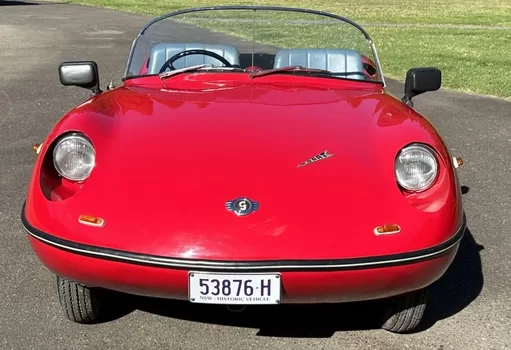

Though the Dart’s performance was modest, it was the car’s playful design that won hearts.
With its curved lines and open cockpit, the Goggomobil Dart looked like a toy car brought to life.
It became a symbol of fun and freedom, embodying the spirit of motoring in the post-war era.
Today, the Goggomobil Dart is a highly sought-after collector’s item, especially in Australia, where it holds a special place in the country’s automotive history.
Collectors and Enthusiasts
Today, Goggomobils are cherished by collectors and car enthusiasts worldwide. These microcars may have been designed for practicality, but they now represent a bygone era of automotive design and engineering. With their compact size, simple mechanics, and undeniable charm, Goggomobils have become favorites at vintage car shows and rallies. In Australia, the Goggomobil Dart is particularly revered, and a small but dedicated community of enthusiasts works tirelessly to preserve these iconic cars.
Goggomobil restorations are a labor of love, often requiring the sourcing of rare parts and meticulous attention to detail. But for those who take on the challenge, the reward is owning a piece of automotive history that brings smiles to everyone who sees it. There’s something about the Goggomobil’s friendly face and petite stature that captures the imagination.
A Goggomobil Dart Roadster is at auction from Lawsons, closing date 3 October 2024.
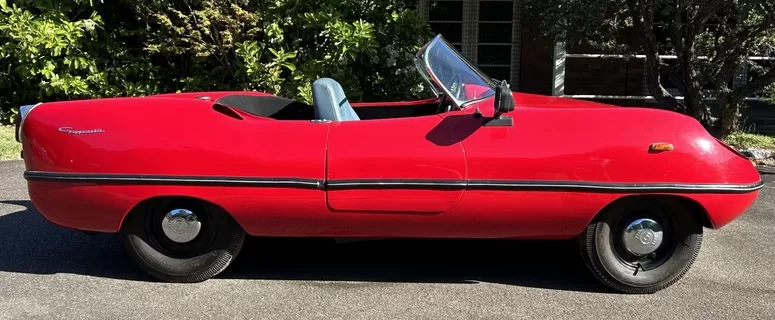

The Legacy of the Goggomobil
The Goggomobil’s legacy extends far beyond its years of production. It stands as a testament to the ingenuity and resourcefulness of post-war automotive design, providing affordable, reliable transportation to a generation of drivers. But more than that, it represents an era when cars were not just about function but also about personality and fun.
Whether as a practical city car, an adventurous sports coupe, or a pop culture icon in Australia, the Goggomobil has left its mark on the world. Its enduring appeal ensures that it will continue to be celebrated by automotive enthusiasts for years to come.
So, the next time you see a Goggomobil zipping down the road, take a moment to appreciate this tiny car with its big story — a car that reminds us that sometimes, great things really do come in small packages.
Related stories
The Future of Caravan Towing: Roof-Hitched Caravans
Chemist’s Cure for Classic Car Collectors
Solar race cars overcome head winds at World Solar Challenge
Advertisement:


